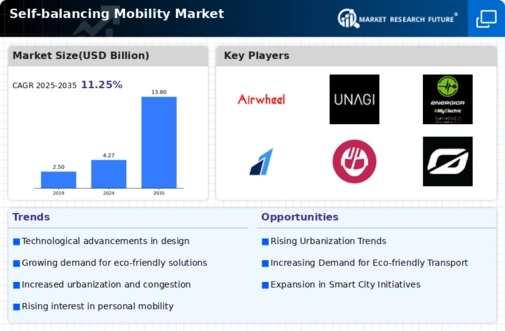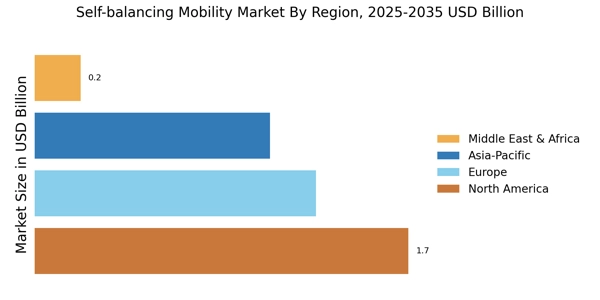Self Balancing Mobility Market Summary
As per Market Research Future analysis, the Self-balancing Mobility Market Size was estimated at 4.261 USD Billion in 2024. The Self-balancing Mobility industry is projected to grow from USD 4.74 Billion in 2025 to USD 13.77 Billion by 2035, exhibiting a compound annual growth rate (CAGR) of 11.2% during the forecast period 2025 - 2035
Key Market Trends & Highlights
The Self-balancing Mobility Market is poised for substantial growth driven by technological advancements and sustainability initiatives.
- Technological integration is enhancing the functionality and user experience of self-balancing mobility devices.
- The focus on sustainability is prompting manufacturers to develop eco-friendly mobility solutions, particularly in North America.
- Personal mobility devices remain the largest segment, while commercial mobility devices are experiencing rapid growth in the Asia-Pacific region.
- Urbanization trends and government initiatives are key drivers propelling the market forward, addressing both environmental concerns and changing consumer preferences.
Market Size & Forecast
| 2024 Market Size | 4.261 (USD Billion) |
| 2035 Market Size | 13.77 (USD Billion) |
| CAGR (2025 - 2035) | 11.25% |
Major Players
Segway Inc (US), Xiaomi Corporation (CN), Ninebot Limited (CN), InMotion Technologies (CN), Airwheel Technology Holding (CN), Razor USA LLC (US), Hoverboard (US), Swagtron (US)


















Leave a Comment